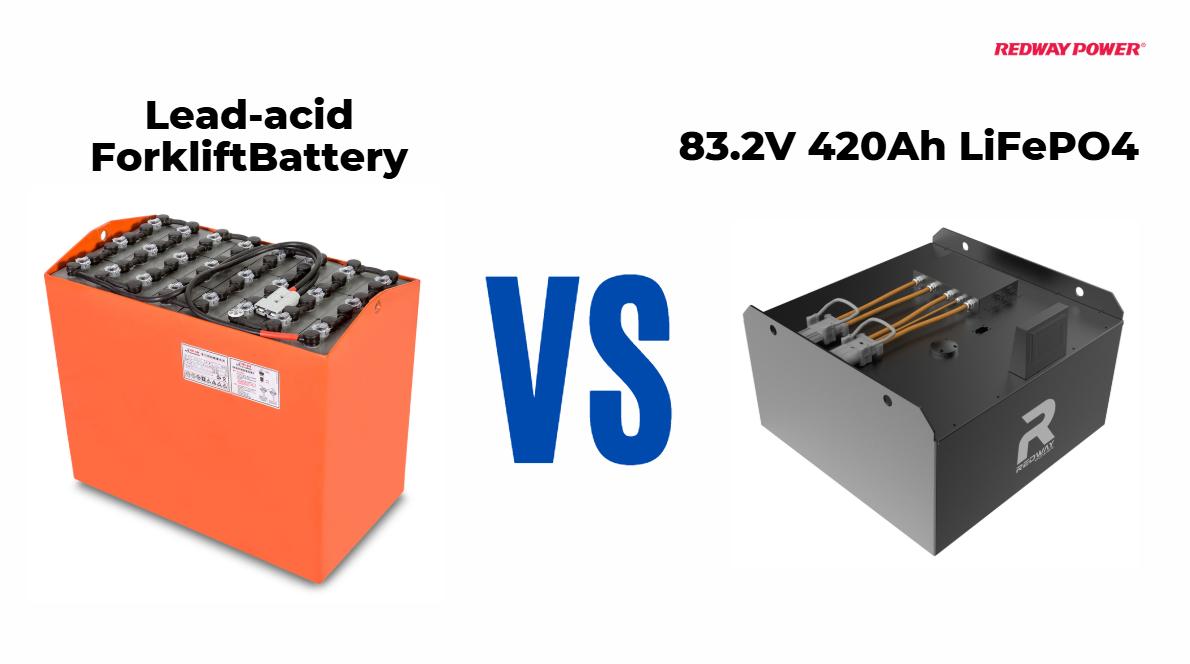When comparing lead-acid and lithium-ion batteries for industrial applications, both options have unique advantages and disadvantages that can impact performance, cost, and efficiency. Understanding these differences is crucial for making informed decisions about battery selection.
What Are Lead Acid Batteries?
Lead-acid batteries are traditional energy storage devices known for their reliability and affordability. They consist of lead dioxide (PbO₂) as the positive plate, sponge lead (Pb) as the negative plate, and sulfuric acid as the electrolyte.Chart: Characteristics of Lead Acid Batteries
| Feature | Description |
|---|---|
| Lifespan | 3 to 5 years |
| Depth of Discharge | Typically up to 50% |
| Weight | Heavier compared to lithium-ion |
| Maintenance | Requires regular checks on electrolyte levels |
What Are Lithium-Ion Batteries?
Lithium-ion batteries are modern energy storage solutions that utilize lithium ions moving between anode (typically graphite) and cathode (lithium metal oxide) during charging and discharging cycles.Chart: Characteristics of Lithium-Ion Batteries
| Feature | Description |
|---|---|
| Lifespan | 7 to 15 years |
| Depth of Discharge | Up to 100% |
| Weight | Lighter than lead-acid |
| Maintenance | Minimal maintenance required |
What Are the Key Differences Between Lead Acid and Lithium-Ion?
The key differences between lead-acid and lithium-ion batteries include:
- Lifespan: Lithium-ion batteries generally last longer than lead-acid batteries.
- Weight: Lithium-ion batteries are significantly lighter.
- Efficiency: Lithium-ion batteries have higher charge/discharge efficiencies compared to lead-acid.
- Cost: While lead-acid batteries are cheaper upfront, lithium-ion batteries often prove more economical over time due to their longevity.
What Are the Advantages of Lead Acid Batteries?
Advantages include:
- Lower Initial Cost: Generally more affordable than lithium-ion options.
- Established Technology: Well-understood with a long history in various applications.
- Safety: Less risk of thermal runaway compared to lithium-ion.
What Are the Disadvantages of Lead Acid Batteries?
Disadvantages include:
- Shorter Lifespan: Typically last only 3 to 5 years.
- Weight: Heavier, making handling more cumbersome.
- Maintenance Needs: Requires regular maintenance to ensure optimal performance.
What Are the Advantages of Lithium-Ion Batteries?
Advantages include:
- Longer Lifespan: Can last up to 15 years or more.
- Higher Efficiency: Offers better energy density and faster charging times.
- Lightweight Design: Easier to handle due to reduced weight.
What Are the Disadvantages of Lithium-Ion Batteries?
Disadvantages include:
- Higher Initial Cost: More expensive upfront compared to lead-acid.
- Temperature Sensitivity: Performance can be affected by extreme temperatures.
- Recycling Challenges: More complex recycling processes compared to lead-acid.
How Do AGM and Lithium-Ion Compare in Performance Metrics?
AGM (Absorbent Glass Mat) batteries are a type of sealed lead-acid battery that offers some advantages over traditional lead-acid but still falls short compared to lithium-ion:
- Depth of Discharge (DoD):
- AGM typically allows a DoD around 50%.
- Lithium-ion allows discharges exceeding 80%.
- Lifespan:
- AGM lasts about 300-500 cycles.
- Lithium-ion can last between 4,000 to 15,000 cycles.
- Weight:
- AGM batteries are heavier than lithium-ion counterparts.
What Is the Initial Cost Comparison Between Lead-Acid and Lithium-Ion?
Initial costs vary significantly:
- Lead-Acid Costs: Generally range from $200 to $800 depending on capacity.
- Lithium-Ion Costs: Range from $1,000 to $3,000 or more based on specifications.
While lead-acid batteries are cheaper initially, lithium-ion batteries may provide better value over time due to their longevity.
What Are Long-Term Cost Considerations for Both Battery Types?
When considering long-term costs:
- Lead-Acid Total Cost of Ownership (TCO):
- Shorter lifespan leads to more frequent replacements.
- Lithium-Ion TCO:
- Higher initial investment but fewer replacements needed over time results in lower overall costs.
Expert Views
“Choosing between lead-acid and lithium-ion batteries hinges on understanding your specific operational needs,” says an expert from Redway. “While initial costs may be higher for lithium-ion, their efficiency, longevity, and reduced maintenance make them a smart investment in the long run.”
Conclusion
In conclusion, both lead-acid and lithium-ion batteries have distinct advantages and disadvantages that must be weighed based on specific application needs. Understanding these differences can help businesses make informed decisions that enhance operational efficiency while considering long-term costs.
FAQ Section
- Which battery type lasts longer?
Lithium-ion batteries generally last longer than lead-acid batteries, with lifespans ranging from 7 to 15 years compared to 3 to 5 years for lead-acid. - What are the main advantages of lithium-ion over lead-acid?
Lithium-ion batteries offer longer lifespans, higher efficiency, lighter weight, and lower maintenance requirements compared to lead-acid batteries. - How does cost compare between lead-acid and lithium-ion?
Lead-acid batteries have lower initial costs but may incur higher long-term expenses due to shorter lifespans compared to lithium-ion options.




